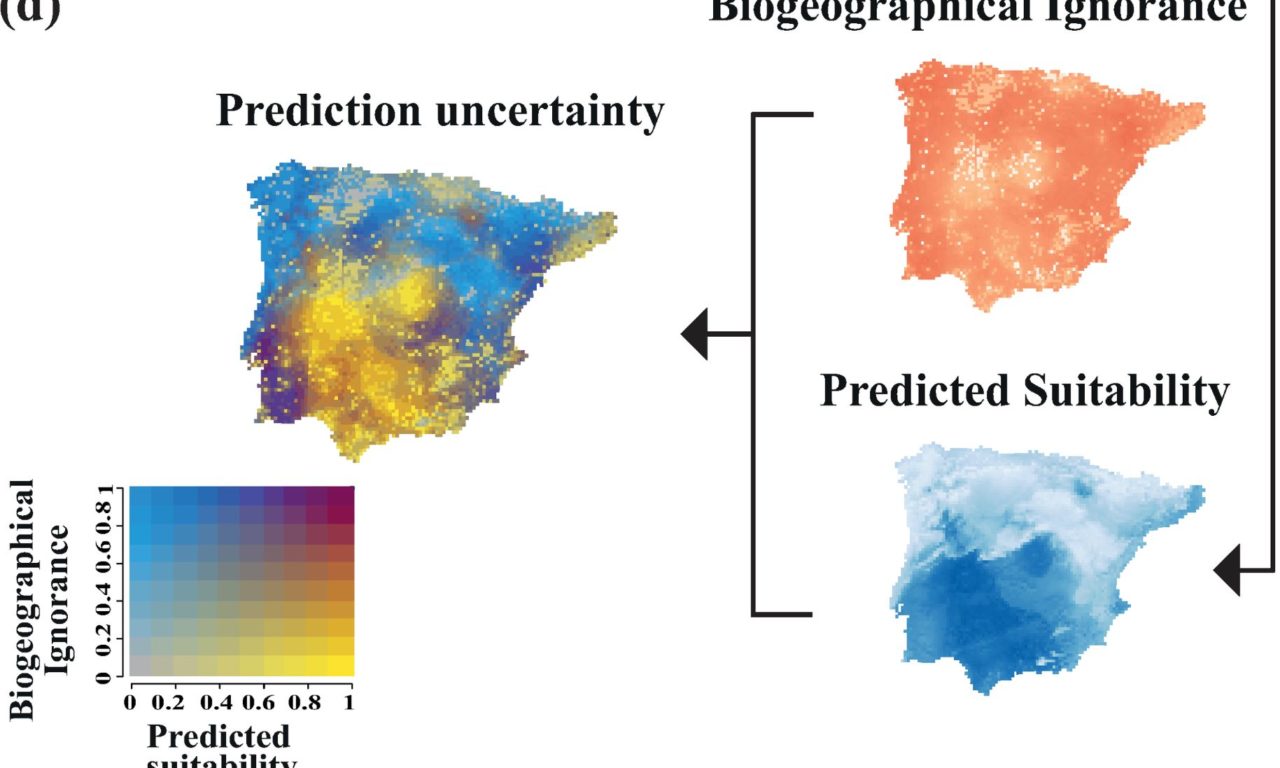Tessarolo, G., Ladle, R. J., Lobo, J. M., Rangel, T. F., & Hortal, J. (2021). Using maps of biogeographical ignorance to reveal the uncertainty in distributional data hidden in species distribution models. Ecography, doi:10.1111/ecog.05793
Species distribution models (SDMs) are subject to many sources of uncertainty, limiting their application in research and practice. One of their main limitations is the quality of the distributional data used to calibrate them, which directly influences the accuracy of model predictions. We propose a standardized methodology to create maps, describing the limitations of occurrence data for covering the distribution of a species. We develop a set of tools based on the general framework of Maps of Biogeographical Ignorance to describe the main sources of data-driven uncertainty: taxonomic stability, environmental similarity, geographical proximity and temporal decay of the underlying biodiversity data. The so-derived indicators of data-driven uncertainty account for inventory completeness, taxonomic quality, time since the surveys and geographical (and environmental) distance to localities with information. These indicators form the basis of ignorance maps, which can be used to visualize the reliability of SDM projections in geographical space, to estimate the uncertainty of these predictions and to identify target survey areas. To demonstrate the application of our approach, we use data on fourteen Iberian species of Scarabaeidae dung beetles. Data-driven uncertainty is widespread even for this well-surveyed group; more than 60% of the region has distributional uncertainty values higher than 0.6, and 30% higher than 0.7. Ignorance maps can be jointly evaluated with SDM predictions to generate spatially explicit maps of uncertainty, identifying where predictions are reliable/unreliable. Neglecting such uncertainty can severely affect SDM effectiveness, as it can introduce biases and inaccuracies into the measured species–environment relationships. These errors could result in incorrect theoretical or practical applications, including ill-advised conservation actions. We therefore advocate for the routine use of ignorance maps or similar techniques as supporting information in SDM applications.












 Plataforma por el Entorno Natural de Tres Cantos
Plataforma por el Entorno Natural de Tres Cantos